| Bhutan's
glaciers and glacial lakes: Lunana |
 |
Bhutan Glaciers - Glacial Lakes |
|
 |
Bhutan Glaciers - Glacial Lakes |
|
|
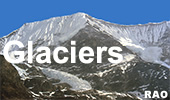 |
|
Lunana's
glaciers are melting
|
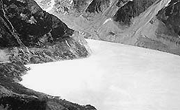 |
| Eight
years ago a glacial lake in Lunana region burst, wreaking havoc
down the Punakha- Wangduephodrang valley. After several forays in
the area by experts there is still no hope of a permanent solution and
the government is making attempts to reduce risks. According to a report
published by the International Centre for Integrated Mountain Development
ICIMOD and UNEP, 24 out of 2,674
glacial lakes in Bhutan are "potentially dangerous",
meaning that they could burst. |
|
Of
these eight lakes are in the basin that feeds the Pho Chhu which
flooded in 1994,
five in the Mo Chhu basin, seven in the Mangde Chhu basin,
three in the Chamkhar Chhu basin and one in the Kuri Chu basin.
They are all fed by glaciers which are reported to be melting because of
"accelerating global warming".
Covering
an area of 1,317 square kilometers most of the 677 known glaciers in
Bhutan have spawned "many dangerous moraine-damned lakes" which are
"increasing in size at a very fast rate". These natural dams may, because
of huge amount of accumulated water, suddenly break like the Luggye
Tsho that caused the Punakha flood, discharging large volumes
of water and debris. Some glaciers are retreating by about 20 meters
to 30 meters every year.
While
most of the lakes that lie in the Lunana region do not pose an immediate
threat, two glacial lakes, Raphstreng Tsho and Thorthormi (Thortomi)
Tsho, both at the source of the Pho Chhu, are considered risky,
with the latter predicted to burst in 15 to 20 years.The findings were
made by numerous expeditions in the Lunana area after the 1994 flood.
The
flood from the Luggye Tsho had apparently damaged the dams of the Raphstreng
Tsho and mitigation work on it was undertaken by an Indo-Bhutan team to
reduce the "hydrostatic pressure" on the weakened dam in 1996.
The
depth of the lake was also partially lowered. However, this particular
lake seems to have drawn considerable attention from experts since the 1980s
and long after the Luggye Tsho burst in 1994.
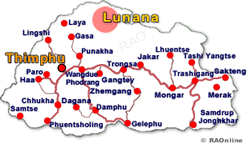 |
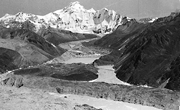
|
|
Glacial
lake in Lunana
|
|
Although
there is no immediate danger, the presence of a peculiar micro - organism
on the surfaces of glaciers could accelerate glacial melting and eventually
lead to a glacial outburst, according to a preliminary survey report conducted
by a Japan - Bhutan survey team which included a glacier - microbiologist,
glacio - ecologist and geologist.
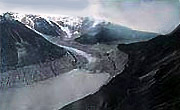 |
 |
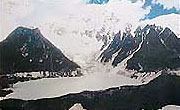 |
| Luggye
Lake |
Luggye
Glacier |
Raphstreng
Tsho |
| Information on Bhutan |
 |
|








